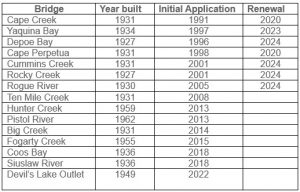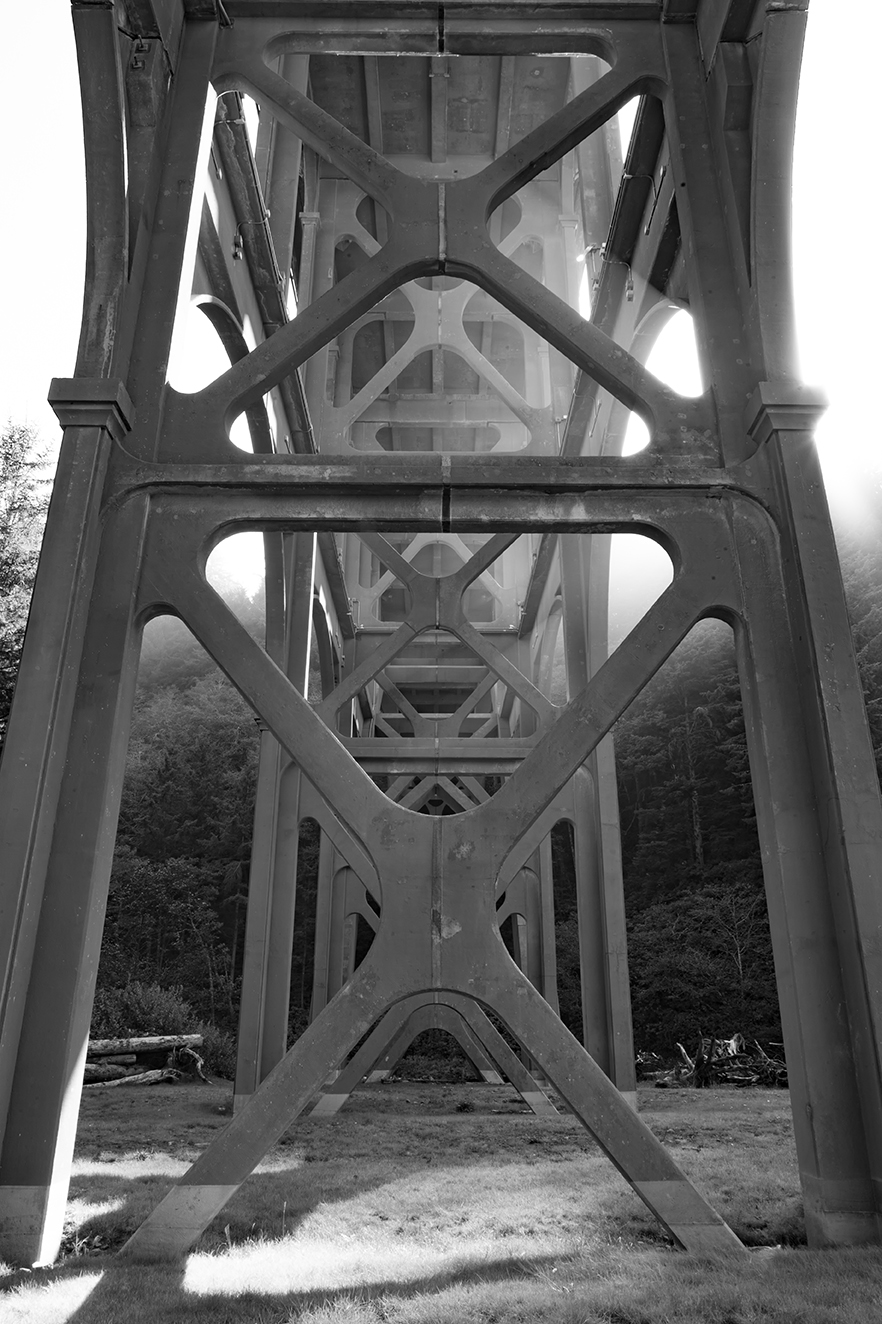Cathodic Protection of Reinforced Concrete
The Oregon Department of Transportation (ODOT), in order to save iconic reinforced concrete bridges built in the 1930s and reduce the high costs of bridge reconstruction, has successfully applied impressed current cathodic protection (ICCP) systems with thermal sprayed zinc (TSZ) anodes on 15 bridges. The nominal life of the zinc anodes is 25 years. In this way ODOT plans to economically extend the lives of the bridges until 120 years or more. Seven of these bridges are now on their second round of anodes.
This process was first used to protect its Cape Creek Bridge. Built in 1931, the bridge is a magnificent 190m long arch bridge on U.S. Route 101 designed in the Art Moderne style and listed in the National Register of Historic Places. After 58 years in this coastal marine environment, the bridge was showing rebar corrosion and needed concrete repair. The first ICCP system was installed and running by Jan 1992 and was updated and renewed in 2020 after 28 years.
TSZ anodes are well established as a component of ICCP systems for the corrosion protection of reinforced concrete structures. TSZ anodes are easily applied to the complex shapes found on concrete bridges. Zinc anodes minimize the dead load added to the structure, and the gray color of zinc also looks very much like concrete, which was an important consideration for the rehabilitation of this historic bridge. Also, the low electrical resistivity of zinc allows uniform distribution of the cathodic protection current.
The use of the zinc anode based ICCP system was evaluated by comparing the estimated life cycle costs of rehabilitation to the replacement cost for a new bridge and the cost of financing. By using the zinc based ICCP system ODOT extended the life of the Cape Creek bridge at a fraction of the replacement costs.
Based on the success of this first installation, ODOT has continued to use ICCP systems with TSZ anodes on a number of bridges, economically extending the life of the bridge. Many are on the second round of protection. The table below shows the history of ODOT ICCP installations.


